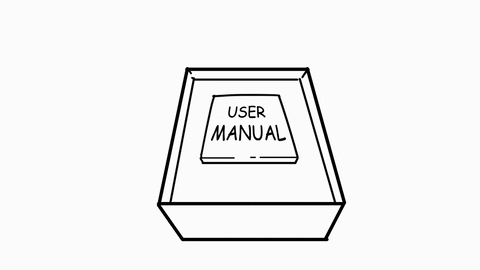7 Steps To Become A Prompt Engineer
Hello there, dear reader! If you’re looking for an article where you’ll actually find a DOABLE guide for getting somewhere with prompt engineering, you’ve come to the right place!

Introduction
Hello there, dear reader! If you’re looking for an article where you’ll actually find a DOABLE guide for getting somewhere with prompt engineering, you’ve come to the right place!
My name is Lucas and I’ve been a software engineer for over 5 years now.
My journey into the world of software and AI began during my university studies at UFU (Universidade Federal de Uberlândia), where I pursued a Bachelor's Degree in Computer Engineering and actually took part in a Robotics Team called Roboforge — you should probably know that robotics and AI are kind of close fields too — where we actually got first place while competing in one of Latin America’s biggest competition: LARC (which stands for Latin America Robotics Competition, not that creative, I have to say).


And in this guide, I’ll give my best shot at taking you step-by-step through what you should learn to get a position as a prompt engineer!
Step 1: Understanding the Basics of LLMs
Before diving into prompt engineering in particular, it's important to have a solid foundation in AI. You know it already — first, you have to learn to walk before you learn to run.
So, explore a little bit and understand how LLMs work. You don’t have to know everything, though, but, try to answer at least 3 questions:
- What the hell is an LLM?
- What types of LLM exist out there?
- How do I build an LLM? (You don’t have to build one! Just learn the basics on how it’s done)
Answering these 3 questions above, you’ll probably find yourself with a bunch of new terms added to your vocabulary and, even more than that, with a bunch of new knowledge added to your toolkit.
It also can be motivating to actually see the requirements of a few prompt engineering positions and Latitude has created a platform for you to see those positions easily. You can check that out here:
⭐️ Prompt Engineering Jobs by Latitude ⭐️
Step 2: Learn by Doing: Craft a few prompts

Crafting prompts is an iterative process that involves trial and error. Start by experimenting with simple prompts for personal projects and use cases while gradually moving on to more complex ones. This hands-on approach — which we usually call project-based learning, a really interesting way to learn, which usually leads to ~23% increase in student achievement — will help you understand how AI models interpret and respond to different inputs
No ideas on how to start prompting? No worries, I’ve got you covered! Let’s check a few examples:
Hop on your favorite LLM (and if you don’t have one, feel free to check our comparison guide) and start with a few basic prompts:
Long article text here .............
....................................
Summarize the above article for me.
Or, another useful example:
Interesting topic title you found somewhere
Translate the above topic title to French.
Both of those examples can show how simple and powerful prompt engineering can really be! Feel free to try those out or any others that might suit you.
Step 3: Learn Some Programming Basics

Programming is a critical skill for any AI professional. To become a proficient prompt engineer, you should learn at least the basics of one programming language such as Python or R, that are really relevant to the field.
Besides that, there are numerous benefits that coding skills will give you: from implementing and testing your prompts programmatically to manipulating data effectively. There are numerous online resources and courses available to help you get started with programming (e.g. Python Roadmap — an awesome roadmap to guide you through your journey, or Python Project Ideas for you to learn by doing).
Step 4: Applying prompt engineering to real-world examples

Awesome, so, now, you already know how to create basic prompts and how to code a little. A really good next step would probably be to start checking some real-world scenarios and how they are being handled while retaining information about the users too!
Let’s check one example here as well:
- Start by imaging a scenario where the company you’re working for has an e-commerce application.
- They’re implementing a new search mechanism with AI in order that users can search with natural language
- The AI here should return a JSON with the characteristics the user asked for
If you’re running an e-commerce for clothing, you’ll probably want to search for relevant information to that sector — like the age, in years. For example:
# If the user says:
# Birthday gift for my 18 months old daughter
# Maybe a good return would be:
{
"gender": "female",
"occasion": "birthday",
"age_years": 1.5
}
Now, let’s run this same scenario working for an e-commerce for sports clothing. Now, searching for the same elements might not be adequate.
# If the user says:
# Birthday gift for my 10 years old daughter, she loves skateboarding
# Maybe a better return would be:
{
"gender": "female",
"occasion": "birthday",
"sport_suggestion": "skate",
"age_years": 10
}
While creating software, the user is always the most important role in the play — from e-commerces to emails, to study companions and code assistants. He is the one who actually pays you, so, always remember to keep that in mind while studying other real-world scenarios.
Step 5: Learn where things go wrong

If you got here, you probably faced a few problems here and there while playing with prompting. From math to sources, to hallucination, there are literally tons of different pitfalls you can end up into if you’re not carefully creating your prompt.
This step here is actually learned by failing, and then, learning (based on how inaccurate the result was) what you can do differently to improve your prompt.
Want source citations and your LLM is generating people and articles on the fly? Try RAG (Retrieval Augmented Generation — that you can learn more about here — and LLMs with access to the internet! They will surely be more precise.
Some really bizarre math is showing up mid-calculation? Honestly, LLMs kind of suck at math (which I, personally, find ironically funny). Maybe you can try out some different LLMs — with more focus on the math side — or a different approach to solving the same problem, running things step-by-step or skipping calculations with LLMs and using general programming to solve that instead.
Step 6: Get Some Fine-Tuning Skills and Improve Reliability

Ok. At this point, you probably know your way around prompting for most of the scenarios you’ll find out there. Unfortunately, as you’ll eventually realize, LLMs tend to be extremely chaotic when not fine-tuned properly, creating varying degrees of “creativity” in your responses.
This could not be a problem, but, generally, it is. Whenever you’re working with responses, we generally want the AI to have a limited range of variance and bias so that we can constrain our answers between the confinement of accepted answers.
If you’re in this step, I recommend you take a look at how LLMs are actually configured, check out temperature and Top P sampling, and check for yourself how changing those values and percentages can alter the variance obtained for your prompts.
Ready to build, test, and deploy some of those prompts? A really cool platform for this is Latitude’s new product, which is currently in early access! Whenever it’s released, I’m sure you’ll find a bunch of cool stuff there that will actually help you in your journey, so check it out!
Step 7: Showcase your work and Start Applying

Hands-on experience is invaluable in the field of prompt engineering and hey, if you’re following along, I’m sure you have tons of that, so, it’s just the time to showcase it to the world!
Don’t forget to make your work tangible to HR persons! They are the ones recruiting and looking for people, so, show both scenarios: technical for the technical people and non-technical for the non-technical people — this means basically: including a variety of prompts and the corresponding AI responses to demonstrate your expertise, translating that response to non-technical terms when needed.
Once you have a solid way to showcase things -- being that from just posts or a portfolio, start applying for prompt engineering positions and it’s just a matter of waiting until you find an awesome place to work.
Kind of lost on where to apply? Latitude’s come to the rescue again — yes, they truly built a whole platform for you to check prompt engineering jobs out, so please, take a look:
⭐️ Prompt Engineering Jobs by Latitude ⭐️
Conclusion

Hey! I’m glad that you got here!
Becoming an engineer is a rewarding journey that involves mastering fundamentals, honing your skills, understanding user needs, and crafting effective products — and this goes for any engineering, from software to prompting.
If you follow those steps, you'll be REALLY well-equipped to enter this exciting field and honestly, we'd love to hear your thoughts and experiences as you embark on this path. Feel free to share your insights in the comments below and don't forget to check out Latitude's new product to further enhance your skills!
